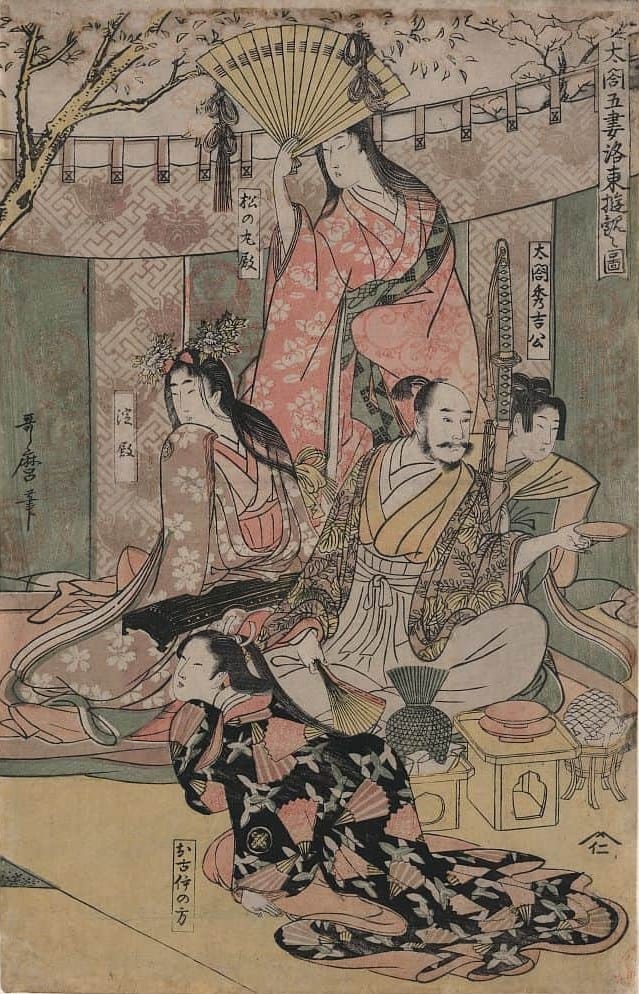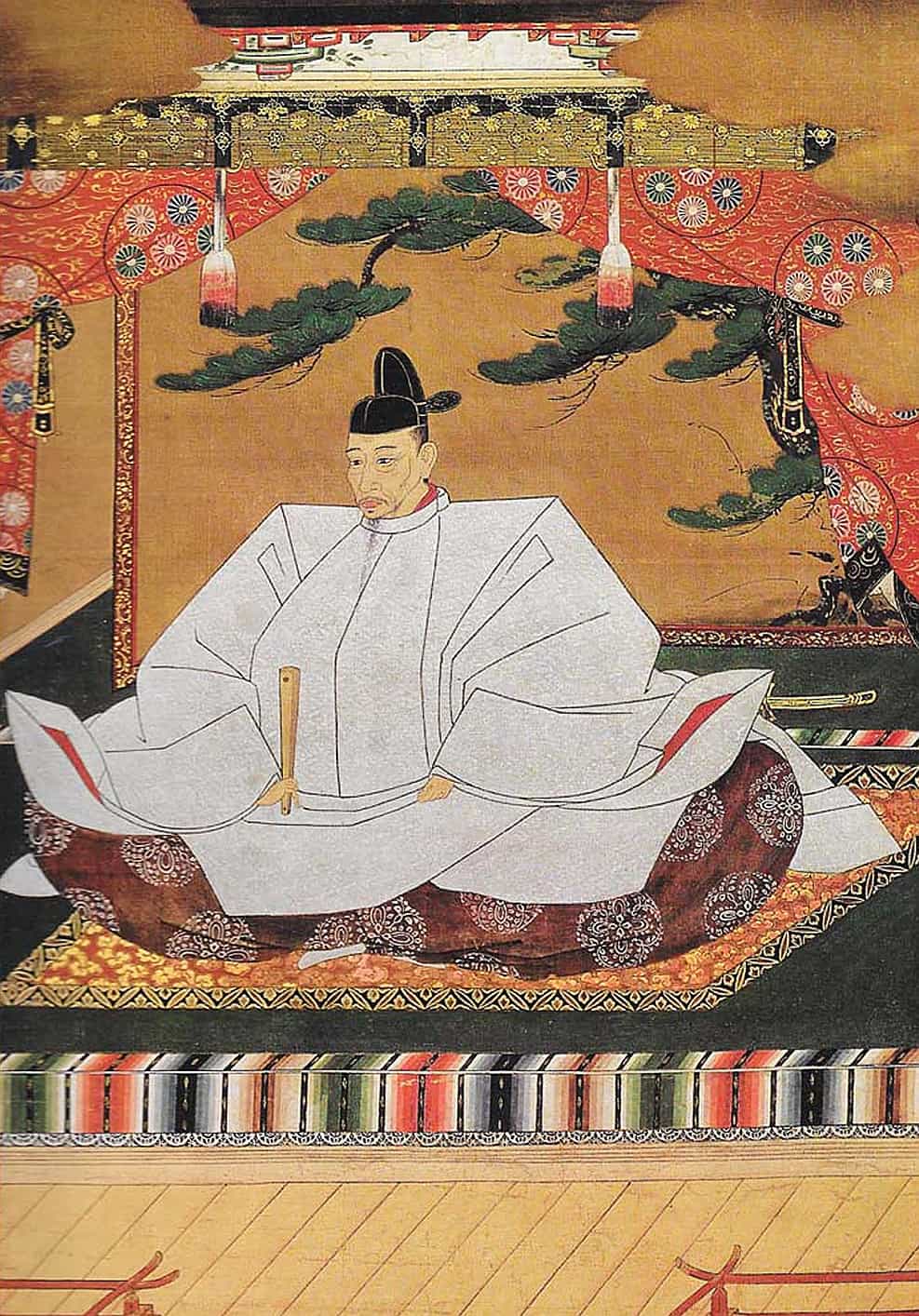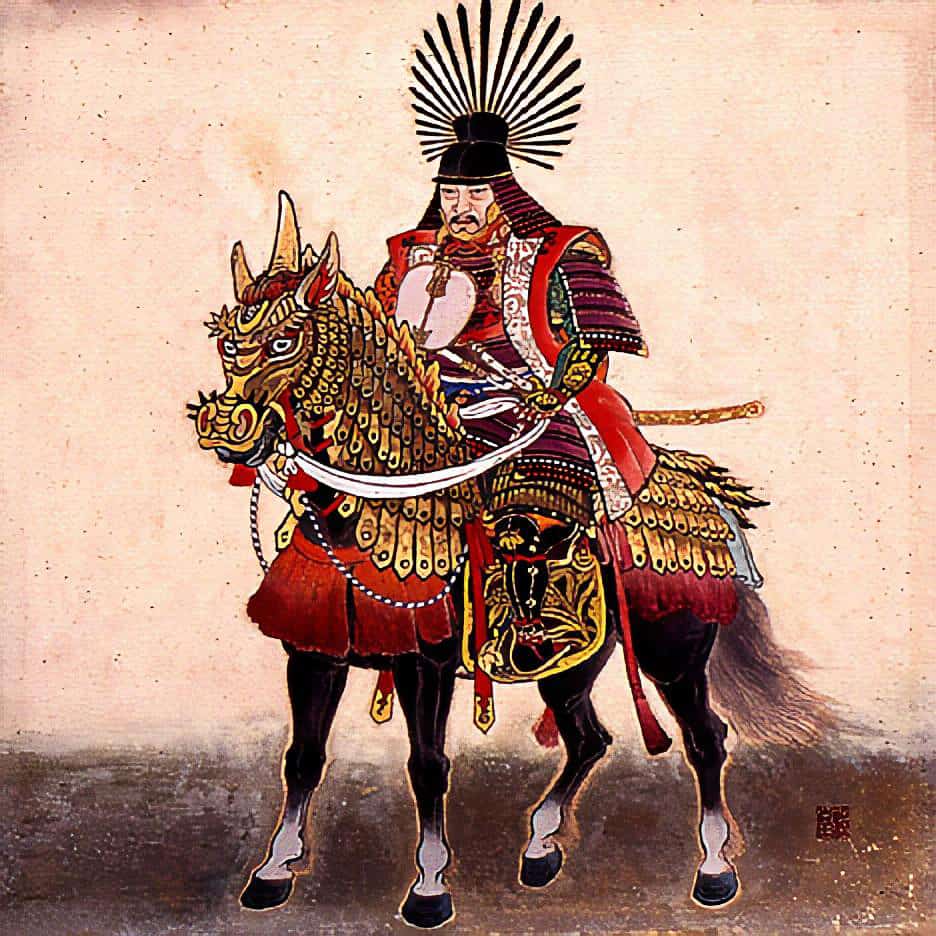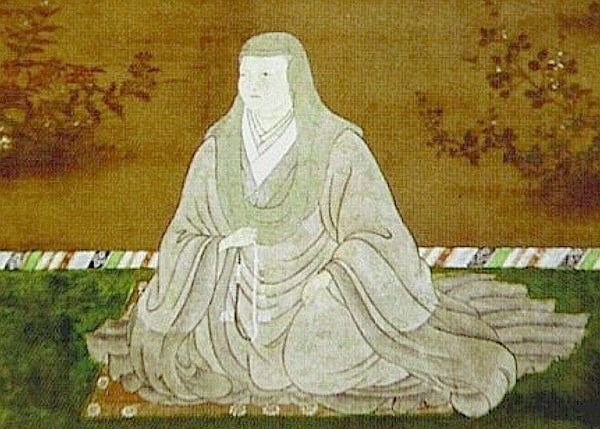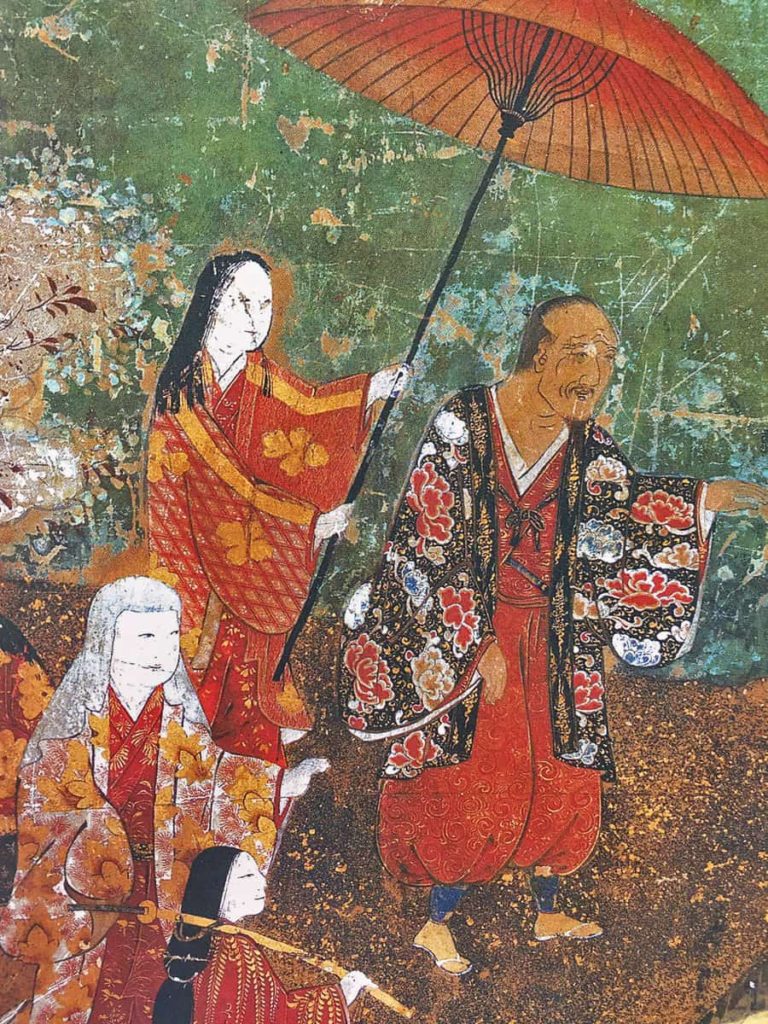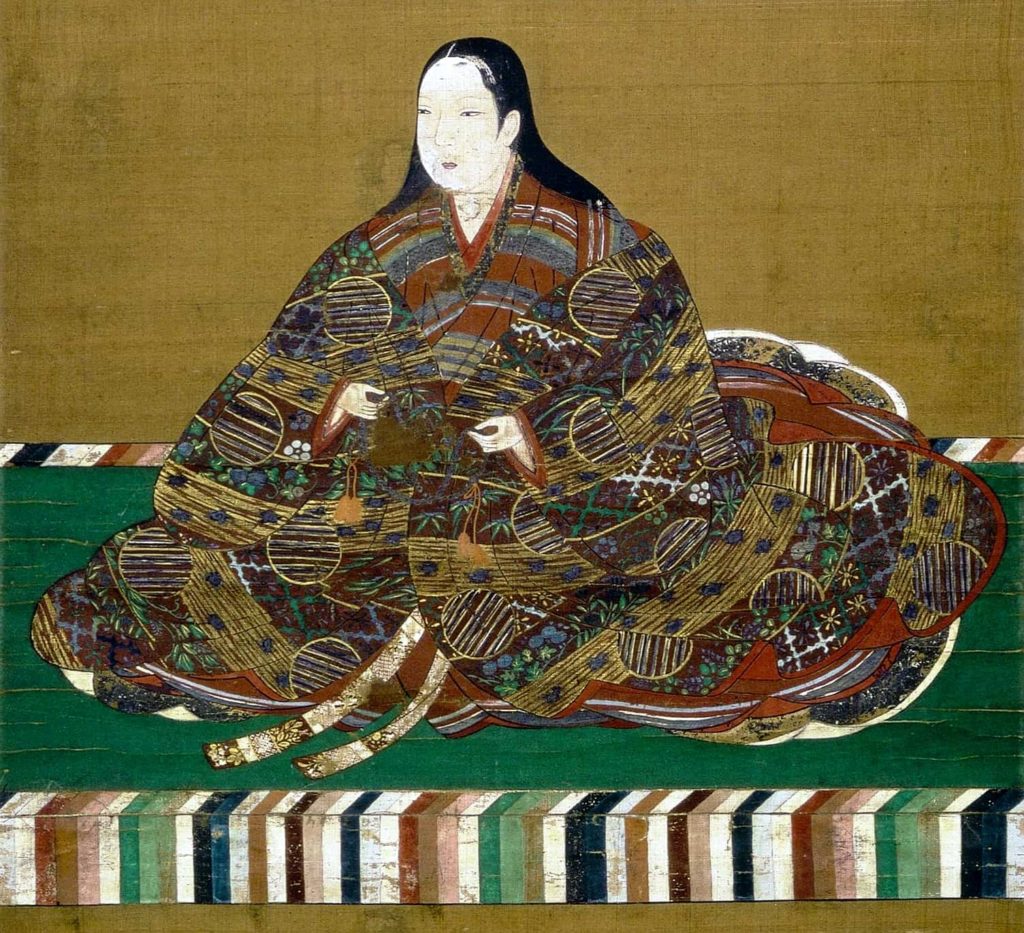II – Hideyoshi, His Wife Nene and His Hundred Concubines
‘Your beauty grows day by day. Tokichiro complains about you constantly and it is outrageous. While that bald rat flusters around trying to find another good woman, you remain lofty and elegant. Do not be jealous. Show Hideyoshi this letter.’
So speaks the unexpectedly kindly voice of Oda Nobunaga in a letter addressed to Nene, Hideyoshi’s wife, around 1575. The imperious Nobunaga was, at the time, lord of half Japan and determined to conquer the rest of it in short order. ‘That bald rat’, Tokichiro, was Nobunaga’s right hand man, soon to become much better known as Toyotomi Hideyoshi. As the saying had it, if a nightingale refused to sing, Nobunaga would kill it. Hideyoshi would persuade it to sing – the song he wanted.
I love the way the letter takes us all the way back to 1575 and gives us a sense of Nobunaga’s, Hideyoshi’s and Nene’s personalities. At the time Tokichiro/Hideyoshi was 37 and famously had an eye for the ladies. Nene was 25 and they’d been married for 12 years.
Meanwhile in England, some 6000 miles away, Elizabeth I – born in 1533 and a near contemporary of both Nobunaga (b 1534) and Hideyoshi (b 1537) – was on the throne. That same year, 1575, Robert Dudley Earl of Leicester organised a magnificent three week party at his lavish palace, Kenilworth, as an extended marriage proposal to his queen. He failed, of course.
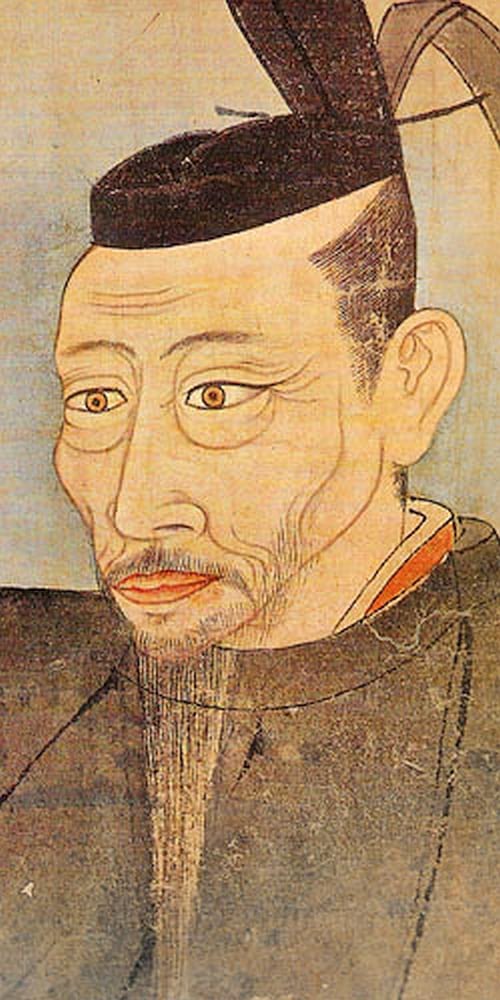
‘Monkey’
When she met Hideyoshi, twelve years earlier, in 1563, Nene was just thirteen, beautiful and vibrant with a wisdom and calm beyond her years. She was the daughter of a mid-ranking samurai and lived in the castle town of Kiyosu where Nobunaga was daimyo. There were plenty of handsome eligible samurai of high rank who wanted to marry her. And then there was Tokichiro, a short, scrawny 25-year-old with an ugly scrunched up face like a monkey. People actually called him ‘Monkey’, which didn’t seem to bother him at all.
Tokichiro was low class, of farming stock, but had miraculously risen through the ranks to enter Nobunaga’s service. He’d been Nobunaga’s sandal bearer, stable boy, gardener and other menial jobs. He certainly didn’t seem to have many prospects. But Nene decided he was the one she wanted to marry. Perhaps she saw his potential or perhaps it was love – an extraordinary way to choose a spouse in those days.
By the time Nobunaga sent his letter, Tokichiro had risen in rank to daimyo and was building his first castle. He was now a general with the name Hideyoshi. He was a superb strategist and a brilliant man. But his key quality was his golden tongue. He could talk himself out of the most hopeless situations and charm people into doing practically anything he wanted. In fact he turned around battles just by surprise tactics and his powers of persuasion. He was also genuinely likeable. Nobunaga became fiercer with age and was prone to terrifying rages. But whenever he heard Hideyoshi’s voice in the distance, a smile would twitch the corner of his lips. He’d be unable to carry on being angry no matter how hard he tried. Hideyoshi had the unfailing ability to make him relax and laugh.
Power Behind The Throne
A town sprang up around Hideyoshi’s new castle as he was building it. Being kind-hearted, Hideyoshi didn’t demand a huge amount of tax from the townsfolk. But the people in neighbouring towns started to complain because they had to pay so much more than the folk in Hideyoshi’s new town. Hideyoshi started worrying that he should raise the rate.
At this point Nene stepped in. From the very start of their marriage he discussed everything with her and when they were apart they exchanged regular letters. Very few of hers remain but his have been collected and translated. On the question of the tax, he writes that he has followed her advice and decided not to raise it. ‘Because you refused I froze it. I issued a new order but you opposed it so I decided to exempt them from taxes.’
In 1582 Hideyoshi’s lord, Oda Nobunaga, was shockingly murdered. Hideyoshi set to work to finish off his project of bringing Japan together, transforming it from 260 warring princedoms into a single unified peaceful country. While he was away campaigning Nene ran the castle. She was in charge of the money and of taking care of his mother and their adopted children and of policing and punishing miscreants.
Nene advised him on everything, from how to run his military campaigns to how to run his empire. As for him, he wrote to her describing every political decision and every military action – how many hostages taken, how many heads chopped off, how he overcame this clan and that clan. He also wrote on projects he was just beginning to think about, like conquering Korea and China. Nene always had wise advice to give.
Some of his letters to her are rather sweet. After describing his latest military campaign he writes that his skin is getting sunburnt and his hair is turning grey and he’s afraid she might not fancy him any more.
The Concubines
And then there were the concubines. Any sensible warlord’s wife knew perfectly well that her husband would take concubines – it went with the job. Hideyoshi however took it to extremes. The Jesuit priest Luis Frois who was around the time wrote that he had a hundred concubines – though as a Jesuit Frois probably wasn’t clear on exactly who was a concubine and who was a lady attendant. Nevertheless it was pretty good going for a short scrawny bloke with a face like a monkey.
It’s impossible to imagine how people felt over four centuries ago, though we can guess that Nene wasn’t happy. Nevertheless she put up with it all with good humour – until Lady Chacha came along.
Nene never had children and neither did any of those concubines – until Chacha. When Hideyoshi was 52 Chacha gave him a son, Tsurumatsu. Hideyoshi doted on him and wrote him many letters signed, touchingly, ‘Daddy’. But the ‘little prince’ died when he was two and Hideyoshi was distraught. Then Chacha produced another son, Hideyori, who became his heir.
Chacha was a famous beauty and came from the most noble possible lineage. She was the daughter of Nobunaga’s sister, Lady Oichi, another famous beauty who had gone to her death in a blaze of glory, accompanying her husband in death when he fell foul of … yes, Hideyoshi. While Nene was modest and down to earth, Lady Chacha was a prima donna and as the mother of the heir demanded her own castle. Hideyoshi had one built for her – Yodo Castle, half way between Kyoto and Osaka.
Japanese Renaissance
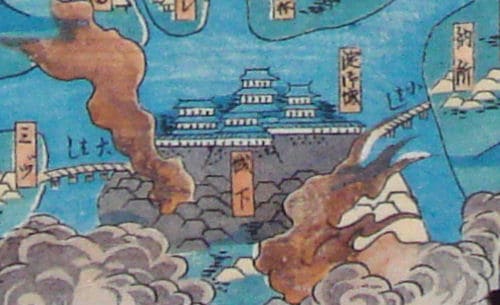
After unifying Japan Hideyoshi reigned for twelve years and ushered in a glorious golden age of the arts. He loved culture, perhaps because he had grown up without any, in poverty. He studied Noh dancing and became a great aficionado of the tea ceremony. He twice invited the entire population of the city of Kyoto to a ten day tea ceremony and cherry blossom viewing (though he got bored and it only lasted a single day). He filled Kyoto with beautiful buildings and was a great patron of the arts. The Momoyama period has gone down in history as a Golden Age.
He died not on the battlefield but in his bed in 1598. Both Nene and Lady Chacha survived him. Nene supported Tokugawa Ieyasu – who, as the adage went, waited and waited for the stubborn nightingale to sing until finally it sang. Lady Chacha and her son Hideyori supported those who opposed Tokugawa and, like her mother, Chacha went out in a blaze of glory, killing herself as Osaka Castle went up in flames around her.
For, as all students of Japanese history know, the age that followed did not belong to Hideyoshi’s rather useless heir, Hideyori, but to the stolid, patient Tokugawa Ieyasu – of whom more, much more, in my next blog.
A version of this article was published in the History Girls blog under the title The Warlord, His Wife and His Concubines on 14th May 2019
